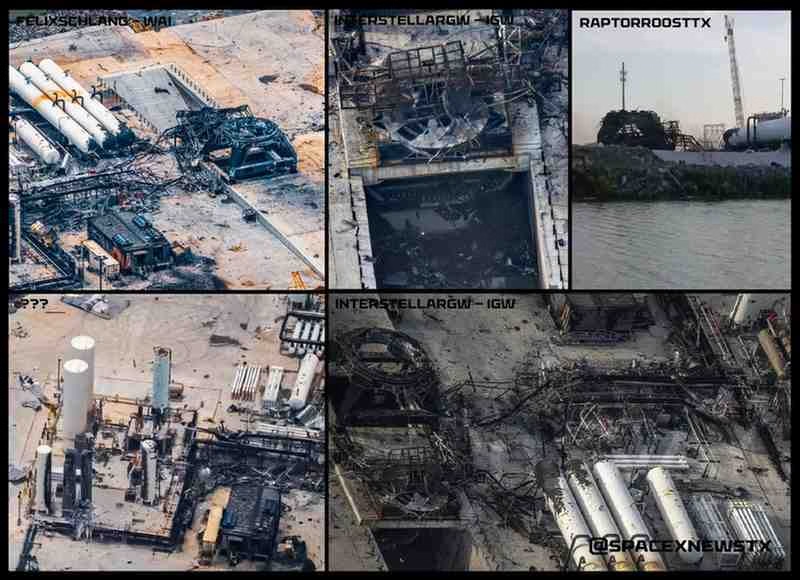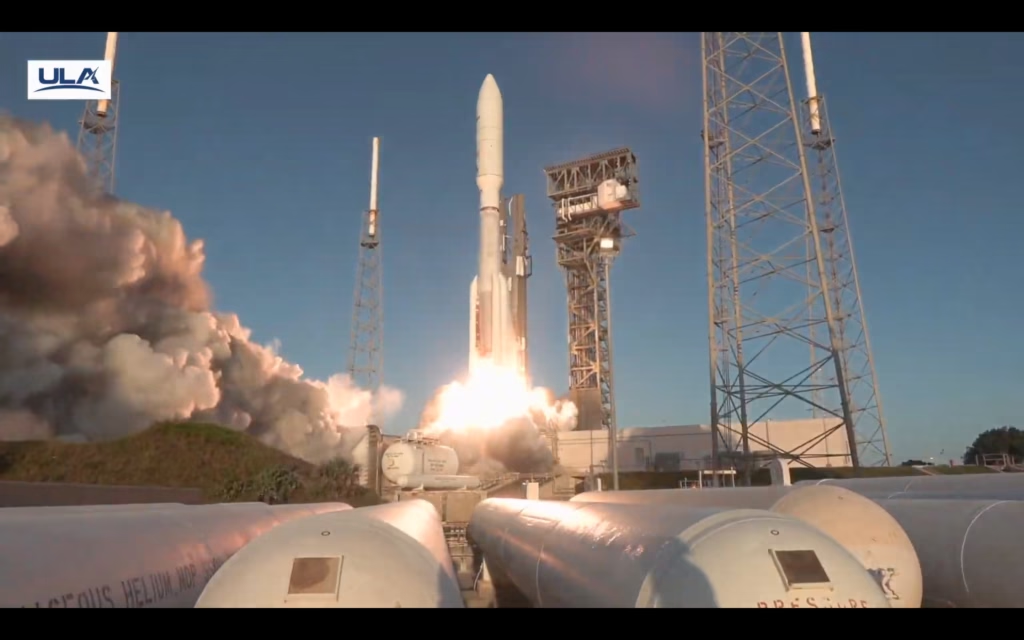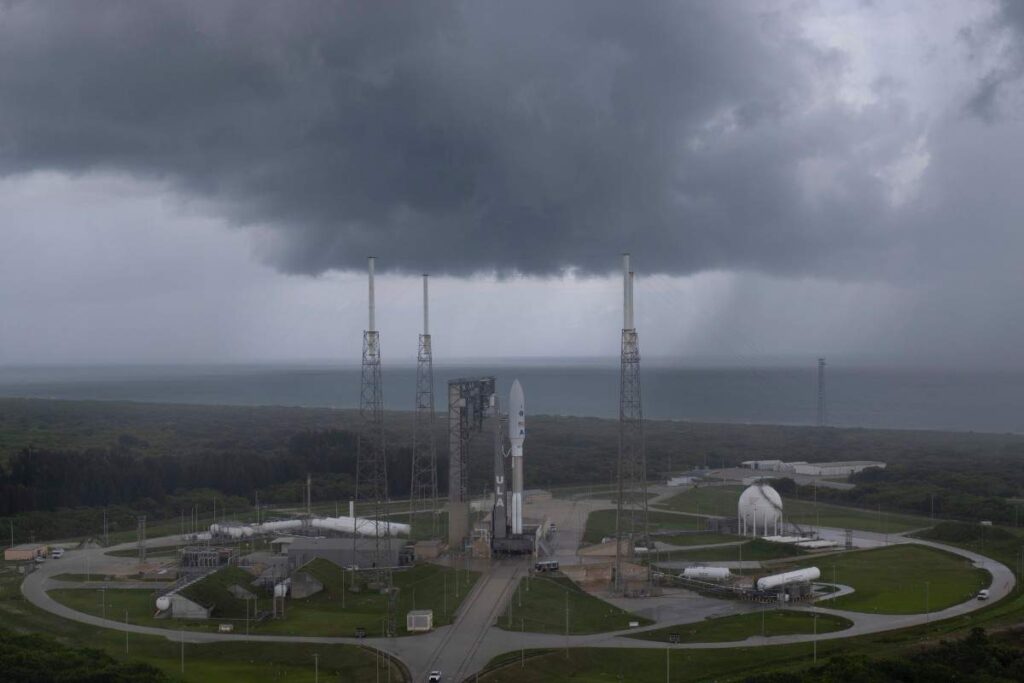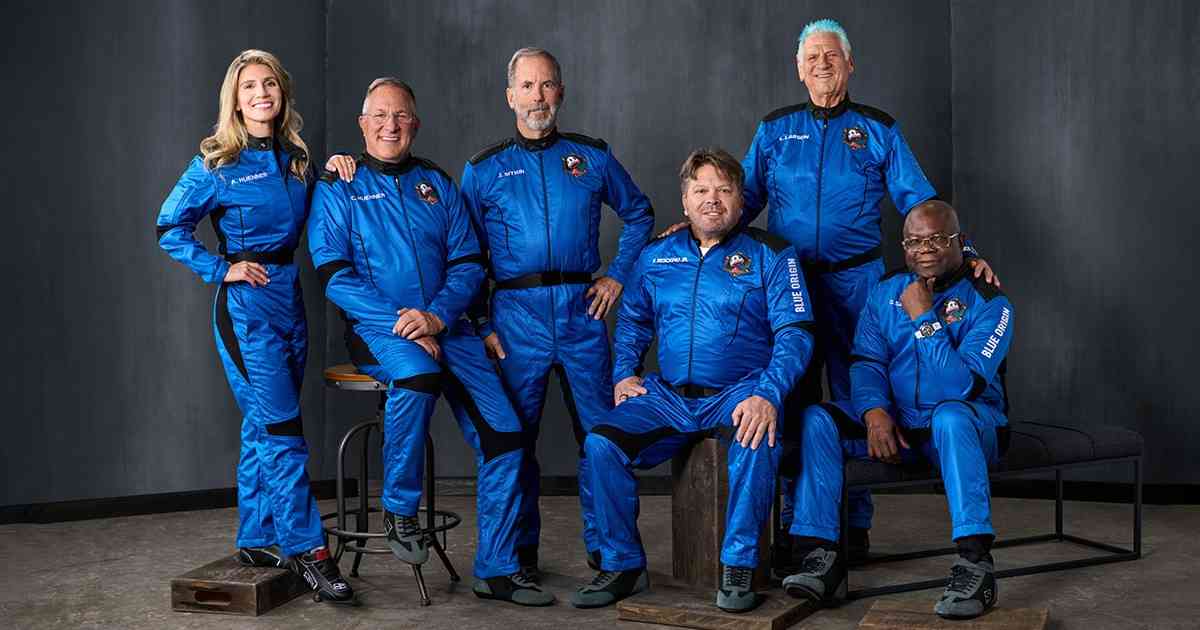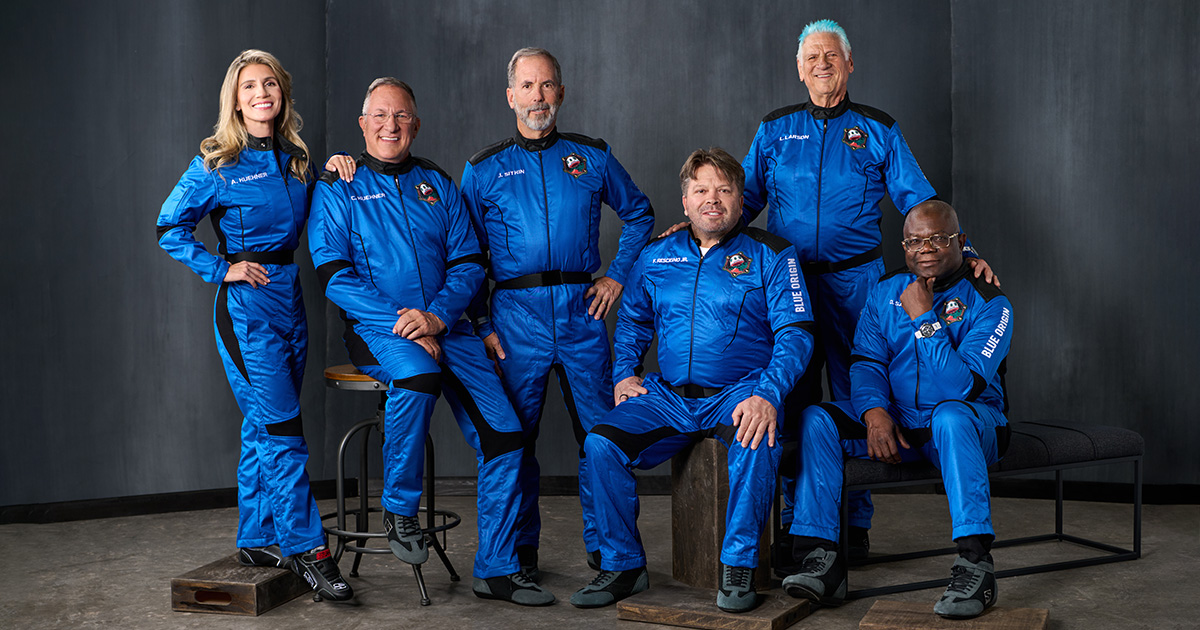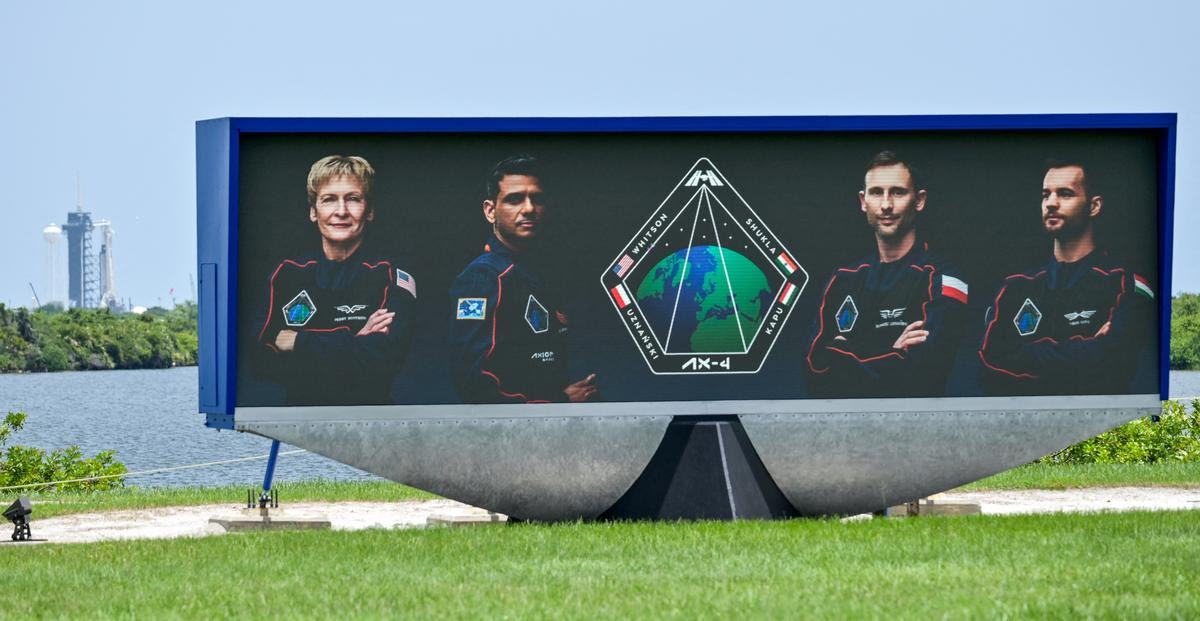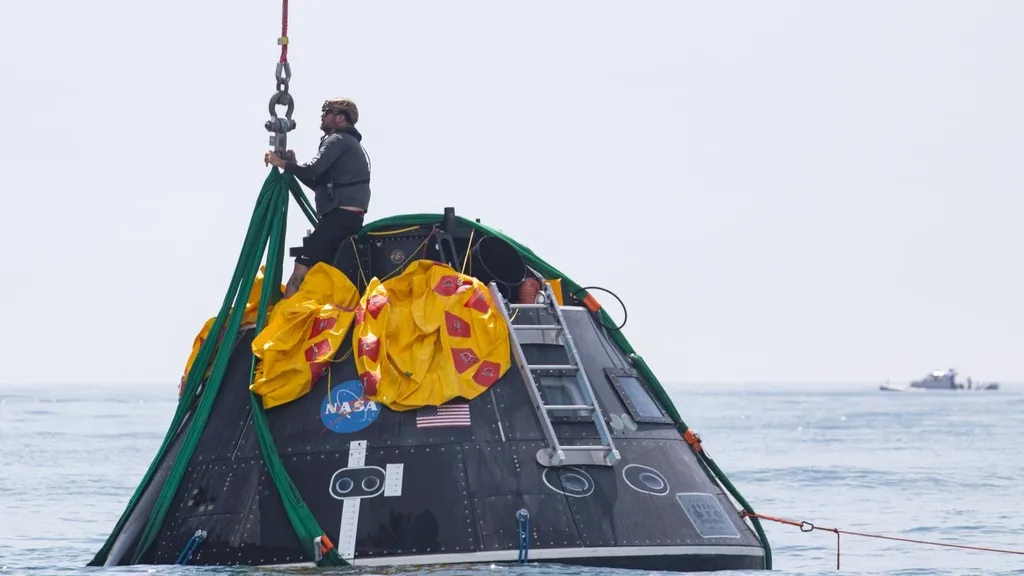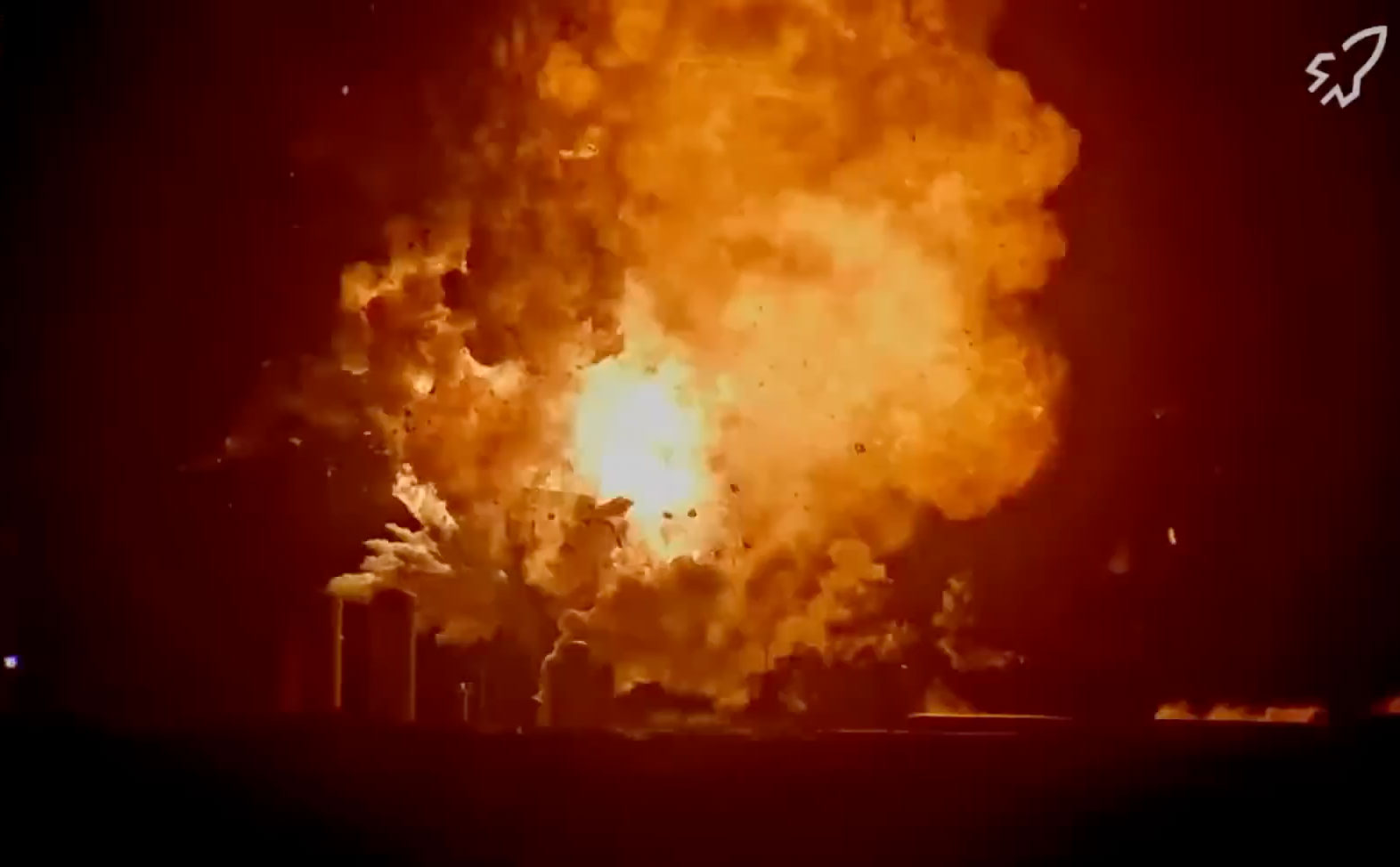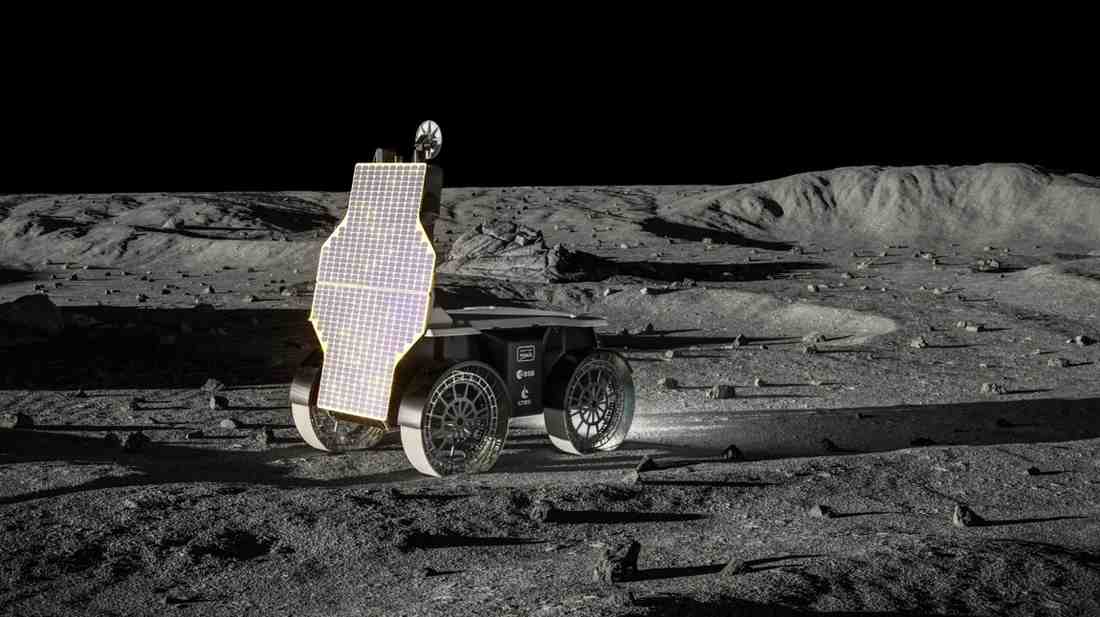Axiom-4 mission launches successfully, sending an international crew of private astronauts to the ISS aboard a SpaceX Falcon 9. The mission includes Indian astronaut Shubhanshu Shukla.
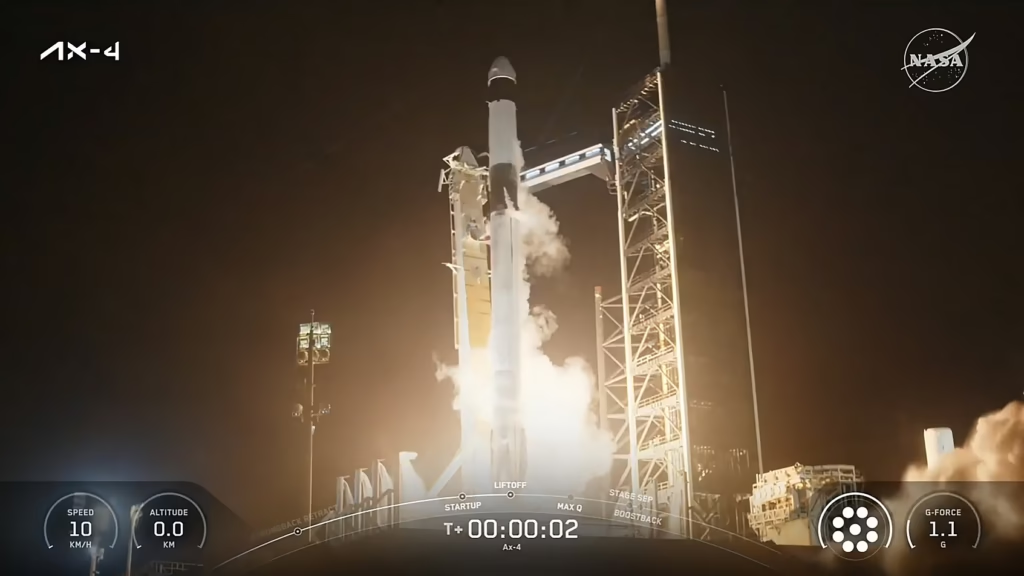
Axiom-4 Mission Launches Successfully From Florida
In a landmark achievement for commercial space exploration, the Axiom-4 mission successfully launched today, carrying an international crew of private astronauts to the International Space Station (ISS). The mission lifted off aboard a SpaceX Falcon 9 rocket from NASA’s Kennedy Space Center in Florida, marking Axiom Space’s fourth human spaceflight mission under NASA’s Commercial Low Earth Orbit Development Program.
The crew, which includes astronauts from Europe, Turkey, and India, is embarking on a multi-day stay aboard the ISS, where they will conduct scientific experiments, educational outreach, and technology demonstrations. Notably, this mission includes Indian astronaut Shubhanshu Shukla, who is set to carry out a series of experiments related to microgravity’s impact on human physiology, biotechnology, and materials science.
Axiom-4 Mission Launches Successfully! A New Era in International Collaboration
The Axiom-4 mission represents a growing trend of global collaboration in space, with multiple nations partnering with Axiom Space to send their citizens into orbit. This initiative is part of Axiom’s long-term vision to build the world’s first commercial space station, which is scheduled to begin construction later this decade.
“This mission is more than just a launch—it’s a symbol of global unity and the beginning of a new chapter in human space exploration,” said Michael Suffredini, CEO of Axiom Space.
Scientific and Educational Goals
During their stay on the ISS, the Axiom-4 crew will engage in over 30 experiments, including research in neuroscience, radiation exposure, water purification systems, and robotics. These projects are designed not only to benefit life on Earth but also to pave the way for future deep space missions.
Astronaut Shubhanshu Shukla, who is representing India on this mission, said before liftoff: “It’s a proud moment for me and my country. I hope this mission inspires young minds back home to dream big and reach for the stars.”
Smooth Launch and Docking
The launch occurred without delay and was followed by a smooth stage separation and orbital insertion. The Axiom-4 mission’s Dragon capsule will aspected to complete a successful autonomous docking with the International Space Station on June 26, 2025, at around 7:00 a.m. EDT.
After a smooth orbital journey lasting nearly 28 hours, the capsule precisely aligned with the space-facing zenith port of the ISS’s Harmony module. Using SpaceX’s automated guidance and navigation systems, the spacecraft executed a controlled approach and soft capture, followed by a series of latching mechanisms to ensure a secure connection.
The docking process was closely monitored from mission control and marked a critical milestone in the mission, allowing the crew to begin preparations for entry into the station and their planned scientific activities.
Axiom-4 Mission Launches Successfully Now What’s Next?
After spending approximately 14 days aboard the ISS, the Axiom-4 crew will return to Earth in the same Dragon spacecraft, splashing down off the coast of Florida. The success of this mission brings Axiom one step closer to establishing a permanent commercial presence in low Earth orbit.
News Source:-
https://x.com/NASA/status/1937770729069547848?t=du0ro_jWD6peFUbgwQG3KQ&s=19
FAQs: Axiom-4 Mission Launches Successfully
1. What is the Axiom-4 mission?
Axiom-4 (Ax-4) is the fourth private astronaut mission to the International Space Station (ISS) organized by Axiom Space in collaboration with NASA and SpaceX. It involves an international crew conducting scientific research, outreach, and technology demonstrations in orbit.
2. When did the Axiom-4 mission launch?
The Axiom-4 mission successfully launched on June 25, 2025, aboard a SpaceX Falcon 9 rocket from Launch Complex 39A at NASA’s Kennedy Space Center in Florida.
3. Who are the astronauts on board Axiom-4?
The Ax-4 crew includes astronauts from multiple countries:
- Shubhanshu Shukla (India)
- One astronaut from Turkey
- One astronaut from a European partner country
- A professional commander from Axiom Space
4. What is the objective of the Axiom-4 mission?
The primary goals are:
- Conducting over 30 scientific experiments on the ISS
- Educational outreach and technology testing
- Strengthening global participation in space missions
- Advancing preparations for Axiom’s future commercial space station
5. How long will the Axiom-4 crew stay in space?
The crew is expected to remain aboard the ISS for approximately 14 days, depending on mission conditions and weather for reentry.
6. How is Axiom Space involved in the mission?
Axiom Space is the organizer and operator of the mission. It is a private space company working to establish the first commercial space station and regularly collaborates with NASA and SpaceX for crewed orbital missions.
7. What role does SpaceX play in Axiom-4?
SpaceX provided the Falcon 9 launch vehicle and Crew Dragon spacecraft for the mission. The Dragon capsule is responsible for transporting the astronauts to and from the ISS.
8. What experiments will be conducted during Axiom-4?
Experiments focus on:
- Microgravity effects on the human body
- Biotechnology and space medicine
- Water filtration systems
- Space robotics and materials science
9. Why is this mission important for India?
This marks a significant milestone as Indian astronaut Shubhanshu Shukla participates in the mission, contributing to India’s growing presence in human spaceflight and international collaboration.
10. How can I watch updates on the Axiom-4 mission?
Live updates and coverage are available on:
- NASA TV
- Axiom Space’s official website
- SpaceX official livestream platforms
- Social media updates from NASA, SpaceX, and Axiom
Axiom-4 Mission To ISS Rescheduled for June 19, 2025 After Technical Fixes-Revealed By ISRO Chief

